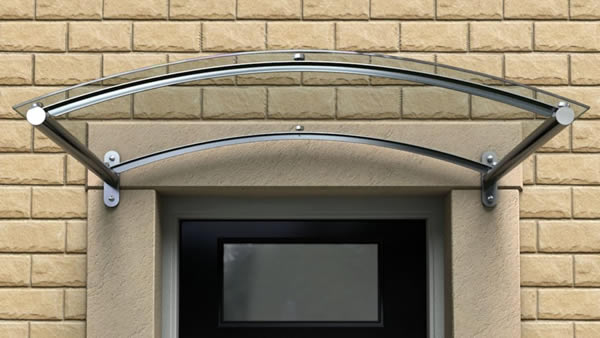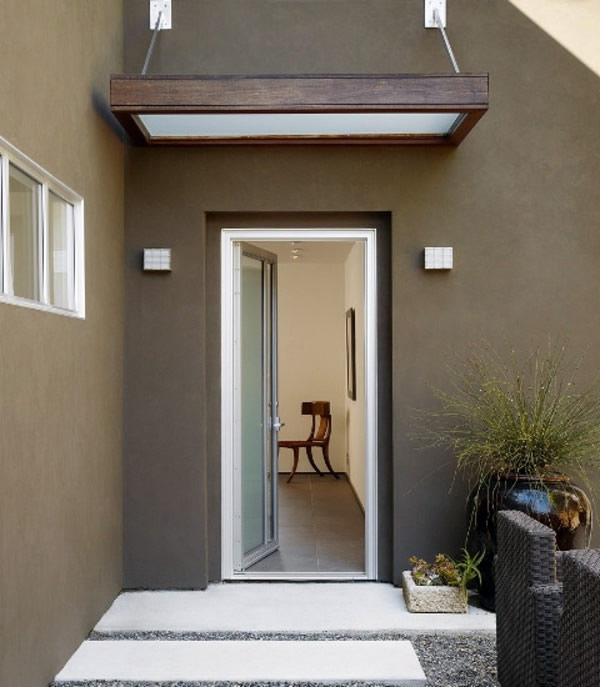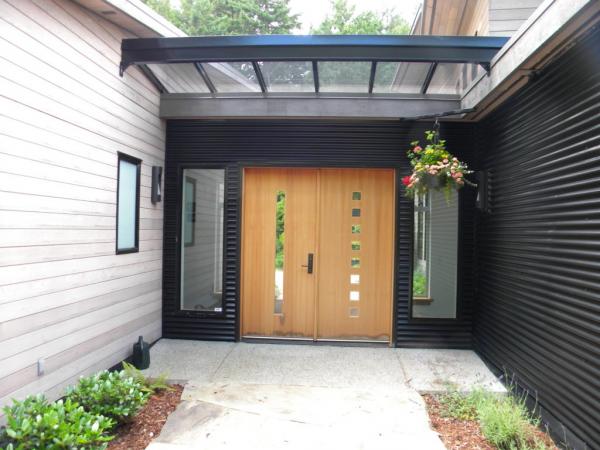A front door glass canopy isn’t just aesthetically appealing, it’s functional. A glass canopy provides shade and helps to keep the interior cool, especially if you choose a coloured or frosted glass.
It also offers protection from the elements, keeping the entranceway area dry and mud-free, even after those torrential downpours. Choosing glass is also optimal as it’s easy to maintain – an essential trait for such a hard to clean and service area of the home.
When determining the size, angle, colour and shape of the canopy, there are a few considerations you want to keep in mind in order to make sure it doesn’t just look right, but serves its purpose.
Follow these tips to create that professional finish that your clients will appreciate.
How Will Rain Water and Debris Drain?
When rain, falling leaves and other debris land on your glass canopy, you want to ensure that everything slides off so that it lands away from the house.
A properly sloped or a convex glass canopy will direct rainfall to a space beyond the front entrance, providing a dry haven for homeowners upon entering and leaving their home.
What if you want the rain to fall to one side or to avoid a certain area of the entranceway?
You can slope the glass in such a way to manipulate the drainage. Think about preventing pooling water, muddy spots, or dumping water on other design features in a way that could cause damage.
It’s also important to keep as much moisture away from the front door as possible, particularly if it’s made from wood. An overhang can help to protect the front door, as long as it’s slanted in the correct way.

How Much Coverage Will the Glass Canopy Provide?
When determining the size and angle, evaluate how much coverage the canopy will provide. Make sure that it is sufficient.
A well-designed glass canopy can also help to make the home more energy efficient, stopping the sun’s rays from heating the front entrance, particularly if the front door is flanked by windows.
Glass Canopy Height
If the front door canopy is too high, you may end up with a big problem – in certain weather conditions, rain could drive under the actual canopy. This will make it ineffective and a nuisance rather than a practical design element.
Determine where rain will fall, particularly in heavy rain conditions, depending on what height the canopy is installed at. You can do this through simple trial and error testing before installing the glass.
Colour and Aesthetic Appeal
A transparent glass canopy over the front door can create a very classic look, especially when paired with other natural building materials, like wood and steel.
Frosted glass is well-suited for creating a minimalist and modern design while also offering better sun protection. Depending on the colours of the home and especially the front door, tinted glass can also look good.

Today, builders are turning to glass for different design elements in the home to create the modern, elegant look that clients want, as well as for the practical benefits. A front door glass canopy adds a unique and customisable piece that looks great and adds value to a property.
Just make sure the design element of the glass canopy has been thought about. A plan should have been designed by an architect or design engineer. This enables a glazier to quote the job accurately and install it to perfectly suit the purpose of your build.


